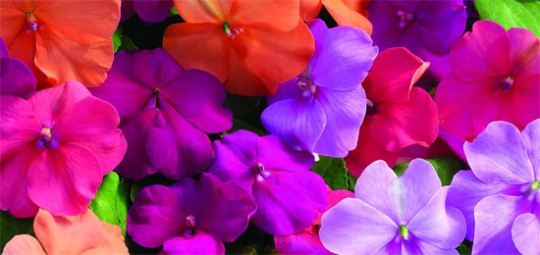Weekend Gardening: Expert Tips For The Month Of June
June 23, 2018
Here are gardening tips for the month of June from the Florida Extension Service:
Flowers
- Annuals to plant include celosia, coleus, crossandra, hollyhock, impatiens (pictured above), kalanchoe, nicotiana, ornamental pepper, portulaca, salvia, torenia, vinca and zinnia.
- Sow seeds of sunflowers. They are easy to grow if you have a sunny spot. Look for some of the new, dwarf varieties that can also be used as cut flowers.
- Remove old blooms (deadheading) to make flowers bloom longer.
- Allow the foliage on spring bulbs to grow. Do not cut it off until it turns yellow and falls over.
Trees and Shrubs
- Mature palms should receive an application of granular fertilizer. Use a special palm fertilizer that has an 8-2-12 +4Mg (magnesium) with micronutrients formulation. Apply one pound of fertilizer per 100 sq ft of canopy area or landscape area.
- Do any necessary pruning of junipers this month.
- Finish pruning the spring flowering shrubs such as azaleas, camellias, spiraeas, wisteria and forsythia by early June.
- This is the month to reproduce plants by budding.
- Check mulch around ornamental plants to be sure it’s two inches thick. Add mulch as needed to help keep weeds down and conserve water. Keep mulch one to two inches away from trunk or stem.
- Inspect maple trees, especially silver maple for infestations of maple soft scale. Look for a white substance with some black on one end. Individual maple scales are about 1/4 inch in diameter and resemble bird droppings. They occur mostly on leaves and can cause defoliation unless controlled.
- Inspect the undersides of azalea leaves for spider mites and lace bugs. If dry weather conditions exist, these insects can do some serious damage if not controlled.
- Check conifers for signs of bagworms. Call your local Extension Service for control measures.
Fruits and Nuts
- Harvest peaches, nectarines and plums as soon as they mature, before the squirrels and birds get to them
Vegetable Garden
- Side dress vegetable gardens with fertilizer containing nitrogen and potassium. A fertilizer such as a 15-0-15 can be used. Use approximately 2-3 cupfuls (1 to 1 ½ pounds) per 100 feet of row.
- Increase watering frequency and amount as tomatoes load up with fruit.
- Vegetables that can be planted outdoors include eggplant, lima beans, okra, southern peas, peppers and sweet potatoes.
- Sweet potatoes are started from plants or “draws”. Be sure to purchase only certified weevil free sweet potato plants.
- Check for the following pests and control them if necessary: tomato fruitworm, stinkbugs on vegetables and aphids on all new growth
Lawns
- Check for the lawn pests and control them if necessary: Spittlebugs in centipedegrass. They are more attracted to especially lush areas of the yard such as along septic drain fields and in areas where excessive nitrogen fertilizer has been used. Chinch bugs in St. Augustinegrass Sod webworm in all turf
- Start monitoring for mole cricket infestations and prepare for treatment.
Comments
One Response to “Weekend Gardening: Expert Tips For The Month Of June”




Native and just found you. SO GLAD!!!